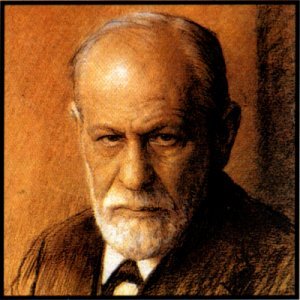
Sigmund Freud (1856-1939)
Founder:
The founder of Psychoanalytical Therapy was Sigmund Freud. Freud spent most of his live devoted to understanding and extending his theory of psychoanalysis. During his early 40's Freud experienced some numerous psychosomatic disorders (such as fears of dying and other phobias). He used his own life experiences to gain an insight on the dynamics of personality development. Many of his basic concepts are still a part of the foundation that theorists build and develop today.
Goals of Therapy:
One of the main goals in Psychoanalytical Therapy is to bring the unconscious to the conscience. By doing this the analyst can determine if things of the unconscious mind are influencing the personality and behavior of the client. Another goal of this therapy is to strengthen the client's ego. A successful analyst using this approach can attempt to modify a client's personality and character structure. The analyst also wants to help the client acquire freedom to love, work, and play.
Techniques:
Analysts use what is called the "blank screen" approach. Thus meaning that the analyst discloses very little of themselves and relies mostly on the client for communication. The analysts also remain neutral. This allows for the client to project onto the analyst. The client must be willing to commit to a long-term therapy process. The analyst may also engage the client in free association. This is where the client may lie on a couch and say whatever may come to mind. The clients express their feelings, memories, or fantasies with no self-censorship. Lying on a couch turned away from the analyst, the client is unable to "read" the analyst expressions which allows the client to self-disclose.

Key Concepts:
- View of Human Nature: Freud believed that behavior is determined by irrational forces, unconscious motivations, and drives. These evolve through the key psycho-sexual stages.
- Structure of personality: personality is constructed of three systems. ID, EGO, SUPEREGO. (see below)
- Consciousness and Unconscious: This is they key to understanding behavior according to Freud. Consciousness is like the tip of the iceberg (the portion you can see) whereas the unconscious would be like the remainder of the iceberg below the waters.
- Anxiety: Can be considered that a state of tension motivates one to do something.
- Ego-Defense Mechanisms: these help the individual cope with anxieties and help prevent the ego from being overwhelmed.
The Id, Ego , & Superego:
- Id- Original system of personality, it is demanding and insistent. Seeks the pleasure principle, (avoiding pain and gaining pleasure) ie: spoiled brat
- Ego-The executive system of personality. Regulate as a traffic cop. Ruled by the reality principle ( realistic and logical things ---> plan of action)
- Superego: The judicial system of personality. Good or bad, right or wrong.
Psychosexual Stages:

*thanks to: http://appsychologybhs.wikispaces.com/file/view/freud.jpg/272931800/freud.jpg
Suggested Links
(courtesy of Gerald Corey from Theory and Practice of Counseling and Psychotherapy)
No comments:
Post a Comment